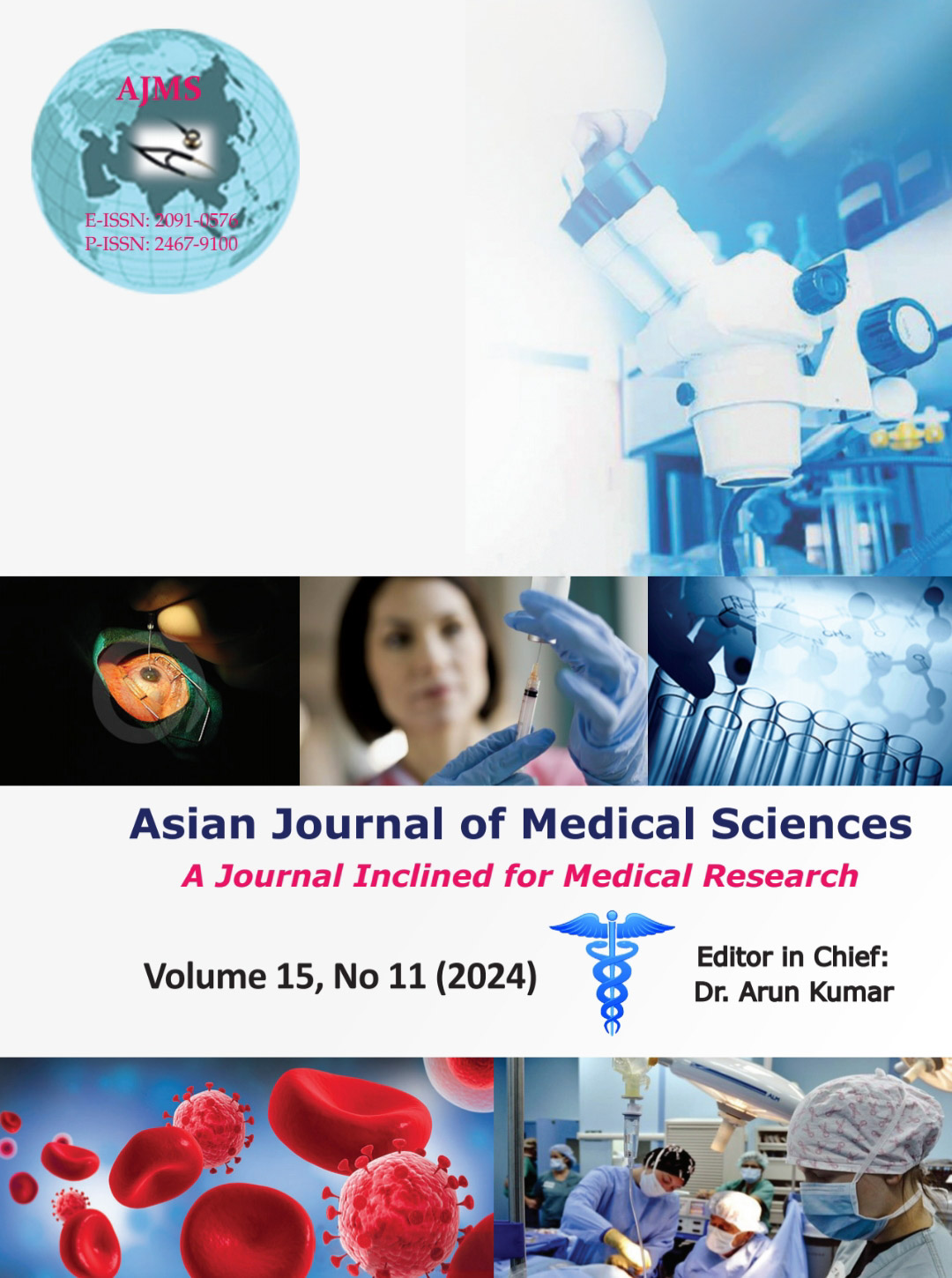The clinical utility of pleural fluid cholesterol as a parameter in differentiating exudative from transudative pleural effusion when compared to light’s criteria
Keywords:
Pleural fluid cholesterol; Light’s criteria; Exudate; TransudateAbstract
Background: Pleural effusions are classified as exudate or transudate to guide clinical management. While Light’s criteria have been the standard for this differentiation due to their high sensitivity, their lower specificity can lead to potential misclassification of transudates as exudates. This study evaluates the clinical utility of pleural fluid cholesterol compared to Light’s criteria.
Aims and Objectives: The aim of the study was to assess the clinical utility of pleural fluid cholesterol as a laboratory parameter in differentiating exudate from transudate pleural effusions.
Materials and Methods: This cross-sectional study included 100 participants with pleural effusion. After baseline data collection and clinical examination, blood tests and pleural fluid analyses were conducted. McNemar’s test compared the sensitivity, specificity, and diagnostic accuracy of pleural fluid cholesterol with Light’s criteria.
Results: Light’s criteria showed a sensitivity of 98.39%, specificity of 84.21%, positive predictive value (PPV) of 91.04%, negative predictive value (NPV) of 96.97%, and diagnostic accuracy of 93%. Pleural fluid cholesterol (threshold >45 mg/dL) demonstrated a sensitivity of 91.94%, specificity of 97.37%, PPV of 98.28%, NPV of 88.10%, and diagnostic accuracy of 94%. The difference in specificity was statistically significant (P<0.05), while the difference in sensitivity was not. The overall diagnostic accuracy of pleural fluid cholesterol was similar to that of Light’s criteria.
Conclusion: Pleural fluid cholesterol has a higher specificity and similar diagnostic accuracy compared to Light’s criteria. It effectively identifies transudates, reduces false positives for exudates, and can serve as a simple test to confirm the type of pleural, potentially minimizing invasive procedures.
Downloads
Downloads
Published
How to Cite
Issue
Section
License
Copyright (c) 2024 Asian Journal of Medical Sciences

This work is licensed under a Creative Commons Attribution-NonCommercial 4.0 International License.
Authors who publish with this journal agree to the following terms:
- The journal holds copyright and publishes the work under a Creative Commons CC-BY-NC license that permits use, distribution and reprduction in any medium, provided the original work is properly cited and is not used for commercial purposes. The journal should be recognised as the original publisher of this work.
- Authors are able to enter into separate, additional contractual arrangements for the non-exclusive distribution of the journal's published version of the work (e.g., post it to an institutional repository or publish it in a book), with an acknowledgement of its initial publication in this journal.
- Authors are permitted and encouraged to post their work online (e.g., in institutional repositories or on their website) prior to and during the submission process, as it can lead to productive exchanges, as well as earlier and greater citation of published work (See The Effect of Open Access).




